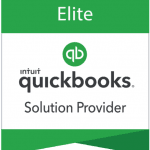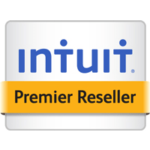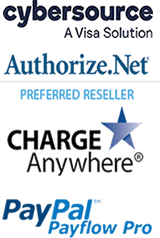When it comes to managing financial transactions, businesses heavily rely on efficient and secure payment solutions. QuickBooks Payments, a comprehensive payment processing service integrated with QuickBooks, offers a wide range of payment types to meet the diverse needs of businesses.
In this article, we will explore the key payment types supported by QuickBooks Payments. Understanding the features and benefits of each payment type will empower businesses to streamline their payment processes, enhance customer experiences, and drive financial success.
ACH Transfers
With QuickBooks Payments, you can electronically transfer funds between bank accounts, reducing the reliance on traditional paper-based transactions. This not only saves time but also minimizes the risk of errors or delays associated with manual check processing. Additionally, ACH payments offer cost savings by eliminating paper check costs, postage fees, and other expenses associated with traditional payment methods.
Moreover, ACH payments supported by QuickBooks Payments bring significant benefits to businesses. Improved cash flow management is achieved through faster payment processing and predictable transaction times. By automating recurring payments, such as rent or subscription fees, businesses can simplify their financial operations and ensure timely payments. Furthermore, the enhanced security measures implemented by QuickBooks Payments safeguard sensitive financial information, reducing the risk of check fraud and theft.
How much does QuickBooks Payments charge for ACH transfers?
QuickBooks Payments charges a fee of 1% per transaction for ACH (Automated Clearing House) transfers. Many similar payment processors charge similar or higher fees for ACH transactions. Some processors may even charge a flat fee per transaction instead of a percentage, which can be costly for larger transactions.
Invoiced Payments
With invoiced payments, you can create and send invoices to your customers, who then have the option to make payments using their debit or credit cards.
The benefits of using invoiced payments through QBO Payments are significant. Firstly, it simplifies the payment process for both businesses and customers. Instead of relying on traditional methods like checks or manual bank transfers, customers can conveniently pay their invoices online using their preferred debit or credit cards.
Additionally, invoiced payments help improve cash flow management. By sending invoices electronically and allowing customers to pay with their cards, businesses can accelerate the payment collection process. This helps ensure timely payments and maintain a healthy cash flow, vital for business operations and growth.
Invoices can be easily created from the QuickBooks Online dashboard. Once your customer receives the invoice, they can easily settle their payments using their credit or debit card reader. Here’s a sample invoice that customers receive through their email:
Sample invoice in QuickBooks Payments (Source: QuickBooks)
How much does QuickBooks charge for invoiced payments?
When it comes to fees, QuickBooks Online Payments charges 2.9% + 25 cents per transaction. Compared to some other payment processors, this rate is relatively low, especially for businesses with smaller average transaction sizes.
Card Reader
Card reader payments refer to the process of accepting debit or credit card payments through physical card readers connected to the QuickBooks Payments system. These card readers are designed to accept card payments by inserting the card into a chip reader, tapping the card on a contactless-enabled reader, or utilizing digital wallets such as Apple Pay or Google Pay.
One of the key benefits of card reader payments is the convenience it offers for both businesses and customers during in-person transactions. By supporting various payment methods, including chip and contactless payments, businesses can provide a seamless and efficient checkout experience. Customers can pay using their preferred payment method, whether it’s inserting their chip card, tapping their contactless card or mobile wallet, or making a digital wallet payment.
With a mobile card reader, your customer can easily pay with their credit and debit cards on the go. You can use a basic mobile card reader for swiping or an advanced reader that accepts EMV chip cards and NFC contactless payments.
Mobile card reader (Source: QuickBooks)
How much does QuickBooks charge for card reader payments?
QuickBooks Payments charges 2.4% + 25¢ for every transaction processed with a card reader. This fee structure is relatively low compared to other payment processors, especially for businesses that process a significant volume of card transactions.
Keyed-in Payments
Keyed-in payments involve manually entering credit card details into the QuickBooks Payments system for transaction processing. This method is commonly used for remote or phone-based transactions where a physical card is not present for swiping or inserting into a card reader.
One of the key benefits of keyed-in payments is the flexibility it offers. Businesses can accept payments from customers over the phone, through email, or even during in-person transactions when the physical card cannot be used. This provides convenience for businesses that operate in various sales channels or have remote customers.
How much does QuickBooks Payments charge for keyed-in transactions?
As for the cost, QuickBooks Payments charges 3.4% + 25 cents per transaction. Considering the convenience and ease of accepting payments through QuickBooks Online Payments, as well as the integration with other financial and accounting tools, the business may find this fee reasonable and affordable, especially if it helps streamline their operations and improves cash flow.
Bottom Line
QuickBooks Payments supports various payment types, empowering businesses to streamline their financial operations and provide convenient payment options to their customers. Whether it’s ACH transfers, keyed-in payments, invoiced payments, or card reader transactions, each payment type comes with its own set of features and benefits.


















